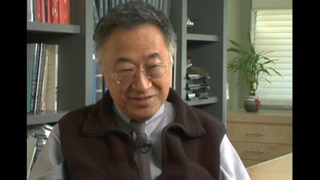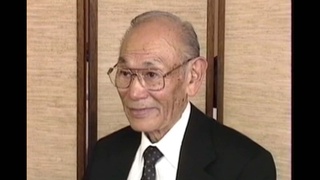Interviews
Helping soldiers
On the grass outside, there weren't even enough blankets for the soldiers. And so all the casualties were lying down on the grass. And one man I remember vividly, he was a young guy, a blond soldier. He must've been 18 or 19. And I was looking after him and he had asked me to write a letter to his mother. So, with only eighth grade education, I couldn't do much. But, he dictated. So I did write the letter for him and he gave me the address to mail the letter. The next morning, I went back to him and he was gone. He passed away that night.
And so, funny how we were really just exposed to all the wartime things. The Army trucks just park in front—our plantation camp was filled with all the trucks and everything. So it scared us, we couldn't go out.
And then, what's funny, two weeks later, I received a letter from Washington D.C. from the Army Department. They had checked our background. They found out that I was an alien. And so they said, We appreciate your support and everything, and You did a good... I still have the letter, you know. And so then, being an alien, I'm sorry but that's about it, you know. And they didn't want me to help anymore. And so I think all my friends, I think, were eliminated from helping. But, that was kind of sad. So, because we grew up during wartime, I think it made it kind of difficult, too. I was considered an alien, I couldn't go out after 6 pm. I couldn't work near Army post. And so, it was kind of difficult for me.
Date: February 19, 2004
Location: Hawai'i, US
Interviewer: Lisa Itagaki, Krissy Kim
Contributed by: Watase Media Arts Center, Japanese American National Museum.
Explore More Videos

Neighbor took care of hotel business during the World War II
(1918-2023) Nisei Japanese kabuki dancer

Anti-Japanese sentiment at the time of World War II
(b. 1918) Issei businessman in Canada


Lack of political power led to camps
(1924-2018) Researcher, Activist

Choice to move east or go to Japan
(b.1920) Japanese Canadian Nisei. Established the Ikenobo Ikebana Society of Toronto


Institutionalization as a bad aspect of camp
(1924-2018) Researcher, Activist

State Department records show concern for treatment of Japanese American internees
(1924-2018) Researcher, Activist

Different tension between East Coast and Los Angeles
Japanese American Creative designer living in Japan

The Kona Island community
(1923-2011) Lawyer, MIS veteran, founder of Francis and Sarah Sogi Foundation

Remembering December 7, 1941
(1923-2011) Lawyer, MIS veteran, founder of Francis and Sarah Sogi Foundation

Meeting Japanese Americans from the mainland in MIS
(1923-2011) Lawyer, MIS veteran, founder of Francis and Sarah Sogi Foundation

Awareness of concentration camps as a Japanese American
(1923-2011) Lawyer, MIS veteran, founder of Francis and Sarah Sogi Foundation

His experiences in Chicago after WWII
(b.1929) Pioneer medical researcher in tissue transfer and organ transplantation.

Manhunt
(1919 - 2005) Challenged the constitutionality of Executive Order 9066.
